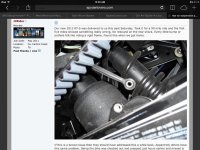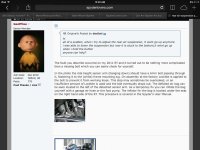oldguyinTX
New member
Does anyone out there know if air should be added to the rear air shock on an RT Ltd? I know that there is an on-board compressor, but I also notice that there is a Schrader valve under the seat. Is there an ideal PSI for a given setting? The manual is somewhat ambiguous about this, and I am not sure that I feel any difference at different settings. Any ideas?


